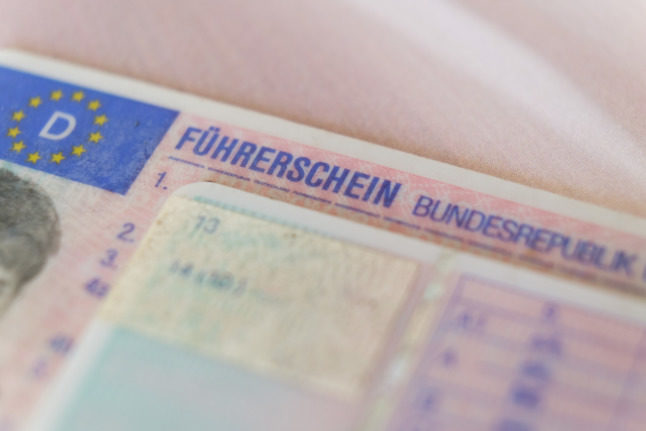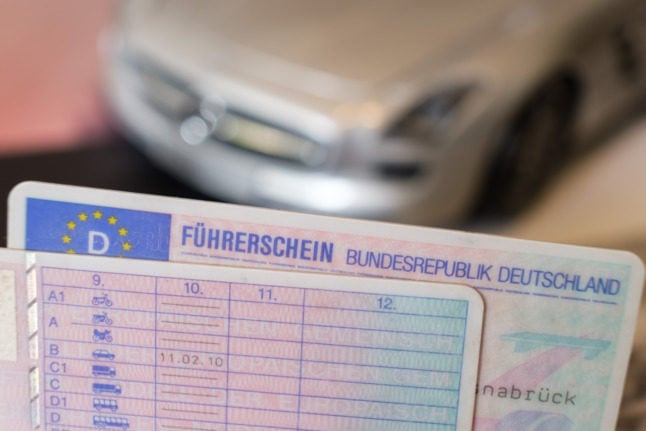Even driving on a fast stretch of the German Autobahn can seem far less intimidating than waiting for your number at the Bürgeramt—hoping you haven’t forgotten any of the important documents for getting your German driver’s licence.
The question of whether or not you can convert your foreign licence – and what documents you need to do so – depends on what federal state you’re in and where your original licence came from, if you have one. Even by German bureaucratic standards, it can be a recipe for confusion.
So what steps can you take to try and make the process even a little simpler? Costs and requirements can vary between federal states. Overall though, there’s three main scenarios for trading your old card in and getting into the driver’s seat:
- You have a driver’s licence from another European Union or European Economic Area state.
- You have a driver’s licence from a non-EU state that Germany considers to have an equivalent level of qualification.
- You don’t have a driver’s licence, or you have a non-EU licence Germany doesn’t recognize as being equivalent in qualification to a German licence
You have a driver’s licence from another European Union or European Economic Area state
This is probably the easiest scenario. If you have a licence from another Member State of the European Union, like Ireland or France – or a European Economic Area country like Norway – you can book an appointment with your Bürgeramt to convert your licence from that of an EU state.
In Berlin, for example, this appointment appears on the online booking menu as “Fahrerlaubnis – Umschreibung einer ausländischen Fahrerlaubnis aus einem EU/EWR-Staat.” It’s important to check with your federal state’s Bürgeramt to see what unique requirements they might have, but in most cases, it should be relatively straightforward.
In Berlin, you need to show up at an in-person appointment with:
- a passport or identity card
- a biometric passport photo
- your current licence along with a copy of that licence
- the fee. In Berlin, this is approximately €36. It may vary according to your federal state.
For most regular licence holders, this is all they will need. But someone looking to convert a licence to drive large trucks may need an eye test and a certificate of mental and physical fitness from their doctor. Bus drivers may need to bring the results of a further road test from an accredited driving school.
Your Bürgeramt will then tell you when you might be able to expect a letter in your mailbox telling you your licence is ready and where you can pick it up. Several weeks, or even months, may pass until you receive this letter. When you finally get to pick up your licence, you will have to surrender your current licence in exchange for your new German one.
You have a driver’s licence from a non-EU state that Germany considers to have an equivalent level of qualification
If you fall under this category – as I did – converting your existing licence to a German one is almost as straightforward as changing a licence that’s from another EU country. The complicated part is figuring out whether your non-EU licence is, in fact, from a jurisdiction Germany considers to be equivalent.
Depending on the federal state where you live, your Bürgeramt may have a different option in its online booking system. In Berlin, for example, you book this appointment through a “Fahrerlaubnis – Umschreibung einer ausländischen Fahrerlaubnis aus einem nicht-EU/EWR-Land (Drittstaat/Anlage 11).”
Your next step is to determine whether Germany has the place where you got your current licence on its “Anlage 11” list. This is the list of non-EU jurisdictions Germany recognizes as issuing licences that are equivalent in qualification to a German one.
Click on the link and see if your jurisdiction is on the list. Germany considers all licences issued in some countries, such as Japan and South Africa, as being equivalent. Other cases are more complicated.
For example, full licences from almost all Canadian provinces and territories are considered equivalent – but learner licences cannot be converted.
In addition, while most US states are considered equivalent, not all are. Finally, no one holding a licence from a jurisdiction on the list will have to do another road test. Some however, such as those with licences from Minnesota, Connecticut, or a handful of other US states, will have to pass a theoretical test.
If the jurisdiction where you got your current licence is on the “Anlage 11” list, you can book your appointment with the Bürgeramt and bring:
- your passport or identity card
- a biometric passport photo
- your current valid licence. You must have obtained it before registering in Germany or during a stay abroad of at least six months
- you may be asked to bring your registration certificate (Anmeldung) proving your German address
- a certified translation of your licence if that licence is not in either German or English
- the fee. In Berlin, this is approximately €36—or €43 for those who need to pass a theoretical test to convert their licence. The fee may vary according to your federal state.
An international driver’s licence won’t be accepted. Drivers wishing to convert a licence to operate trucks or buses will also need to submit practical, medical, and eyesight tests. Drivers looking to convert standard licences don’t have to submit these.
Once again, your Bürgeramt will then let you know you when to expect a letter in your mailbox telling you your licence is ready and where you can pick it up. You will have to surrender your current licence in exchange for your new German one.
The United Kingdom – a special case
Brexit made things more complicated for people holding a UK driver’s licence. The Germany Transport Ministry says that it is in the process of setting up mutual recognition with the UK, a move that would put it into the list of country’s that meet EU standards.
Until that happens it is possible to make an appointment and exchange your British licence for a German one without having to take any tests.
You should note though that since the end of June 2021 it has been illegal to use your British licence on German roads if you have been here for longer than six months.
SEE ALSO: Can I drive in Germany with my UK licence?
You don’t have a driver’s licence, or you have a non-EU licence Germany doesn’t recognize as being equivalent in qualification to a German one
If the place where you got your current non-EU licence is from a jurisdiction that’s not on the “Anlage 11” list, you have to follow the rules for a “Drittstaat” or “third state.” Again, depending on your federal state, your Bürgeramt may have a different option in its online booking system. In Berlin, you also book this appointment through a “Fahrerlaubnis – Umschreibung einer ausländischen Fahrerlaubnis aus einem nicht-EU/EWR-Land (Drittstaat/Anlage 11).”
Important to know if you have a licence from a country whose standards Germany doesn’t recognise: you have to pass both practical and theory tests before applying for your German licence!
The good news is that you don’t need to go through a set amount of lessons as you would if you had no licence. You take the tests when you think you are ready.
In Berlin, licence holders from a “Drittstaat” jurisdiction need to bring:
- your passport or identity card
- a biometric passport photo
- your current valid licence. You must have obtained it before registering in Germany or during a stay abroad of at least six months
- you may be asked to bring your registration certificate (Anmeldung) proving your German address
- a certified translation of your licence if that licence is not in either German or English
- the fee. In Berlin, this is approximately €36—or €43 for those who need to pass a theoretical test to convert their licence. The fee may vary according to your federal state.
- Proof of having completed training in first aid
- Proof of having passed a road test from an accredited German driving school
- Motorcyclists will have to provide the results of an eye test
An international driver’s licence won’t be accepted. Drivers wishing to convert a licence to operate trucks or buses may also need to submit practical, medical, and eyesight tests. Once you receive a letter telling you that your licence is ready to pick up, you’ll have to surrender your current licence to pick up your new German one.



 Please whitelist us to continue reading.
Please whitelist us to continue reading.
Member comments